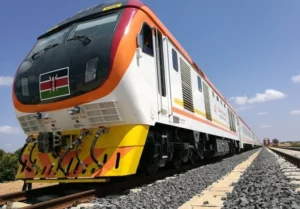An overland journey to the South of Africa is one of the most sort after trips by adventurers. The idea of traveling by road or railway from East Africa to South Africa has the glamour of turning loafers into rovers.
In today’s world of custom overland trucks and many travel companies organizing such expeditions, it is quite easy to “Plan and Go”. The more daring ones can also use buses, personal cars, motorcycles, or bicycles on the tarmac roads.
I have used buses and trains to travel from Nairobi to Victoria Falls town and trips were quite smooth. However, this was not the case in the 1950s.
While reading through the June 1952 issue of the East African Railways and Harbors, I came across the following travelogue. A recap of a 2,000 miles journey from Tanzania to South Africa and back.

2000 Mile Journey from Iringa to Johannesburg to Join Chassis and Body
A TRIP of over 2,000 miles was completed last year by a convoy of bus chassis from Iringa in Tanganyika to Johannesburg to have bodies mounted by J. Brockhouse (South Africa), Ltd. at the factory where they were made.
The original arrangement provided for the chassis to be delivered from England to Tanganyika, where the bodies would have been mounted after they had been sent from South Africa by sea. Owing to the difficult shipping position, however, it was decided later that it would be better to have the bodies mounted at the factory and deliver the complete units by road. As the first delivery of chassis had already reached East Africa, this necessitated bringing them by road to Johannesburg and involved a round trip of over 4,300 miles.
Mr. C. W. Snowden, a mechanical inspector from the Iringa depot, was in charge of the convoy, and each chassis was driven by an African employee of the Administration.
The southward journey, which was over some of Africa’s worst roads, took 13 days, and traveling at times up to ten hours a day the convoy moved at an average speed of about 30 m.p.h., which was a very creditable performance.
Mr. Snowden’s diary reveals that trouble was first encountered 20 miles from Mbeya where, after heavy rain, two vehicles bogged down hopelessly. They were dug out the following morning, but before long there was a repetition, and this time each vehicle had to be man-handled over a hill.
The remainder of the journey seems to have been remarkably quiet and, apart from the theft of one of the driver’s clothes while camped at night, everything went according to plan.
At Victoria, there was a halt for an hour while the party viewed the world-famous Falls and at Bulawayo, the drivers were taken into town at night to see the lights.
Messrs. Brockhouse had arranged an escort from some miles out to their factory where the convoy arrived in a triumphal procession on the afternoon of the 13th day.
The return journey, which took 11 days, was completely uneventful apart from a puncture and a slightly damaged wing. At one point, however, between Wankie and Livingstone, the drivers had an uncomfortable spell negotiating a narrow bridge which only allowed about one-quarter of an inch clearance on each side of the vehicle, It speaks well for their skill that not one of the buses was scratched.
It is on record that when the convoy arrived at lringa a local football match that was in progress was disrupted and the road was lined with spectators who displayed a lively interest in the arrival of the buses and their drivers.
Eighteen buses in all have been brought by this method to Tanganyika and a further convoy of eight is expected towards the end of September. These will be the first of a further order for 50 buses made up of 31 third class, 15 composites, and four upper-class vehicles. When they have all been delivered the reorganization of the Tanganyika road passenger services will be complete.
First published in the First Issue of the EAR&H Staff Magazine (June 1952).



